
2015年12月26日 星期六
2015年12月20日 星期日
一種.... 在漂泊中找定位的習性

奇異的是
已經成了一種自然
當我看到景象
就自然想到了畫....
或許這景與這畫沒什麼關聯
但卻在我心裡串了起來.....
兩天前
經過 Meadows
路過了愛丁堡大學的圖書館
倒沒特意走到那兒
只是一段必經之路
在夜晚
一片漆黑(雖有稀疏的路燈閃爍)
看著這棟建築物
全亮著燈火
覺得自己先看到的倒不是這棟建築物
而是透過黑摸摸之景
才看到它的....
這讓我想起了
蘇格蘭畫家彼得˙竇伊革 (Peter Doig, 1959- ) 畫的 “水泥小屋” 與他說的話....

〈水泥小屋之二〉(Concrete Cabin II)
1992年
油彩, 畫布
200 x 275 cm
200 x 275 cm
〈勃利耶〉或〈水泥小屋〉(Briey 或 Concrete Cabin)
1994-6年
油彩, 畫布
275 x
200 cm
竇伊革曾說:
人們以為我先畫建築物的外表, 然後才用樹遮蔽, 事實上並非如此, 我是先透過葉子, 才看到建築物, 因此我用這實際的視覺走法來創作, 如此一來, 畫的景象會往前向你推進….
沒錯, 我的感受真如此.....
我認為那是一種習性
一種在漂泊中找定位的習性呢!
******
談這棟建築....
真的想起了一位朋友
一位學建築的朋友
整個心情都湧了上來
特別在此刻....
去年與前年
這時候, 我們常一起喝咖啡
也幾次經過這圖書館....
別來無恙?
******
談這棟建築....
真的想起了一位朋友
一位學建築的朋友
整個心情都湧了上來
特別在此刻....
去年與前年
這時候, 我們常一起喝咖啡
也幾次經過這圖書館....
別來無恙?
2015年12月19日 星期六
有關艾未未 (about Ai Weiwei)
在北京工作室的艾未未
2015年四月
由五角星設計工作室(Pentagram)的 Harry Pearce 拍攝
昨天
一位朋友傳了一個訊息給我
說:
...
前天剛看到台灣藝術家雜誌上,妳寫艾未未的文章,我數度掉下淚來,一直以來覺得好的藝術創作與意念,能為人類帶來啟示與關懷,我真的敬佩他的勇氣,謝謝妳寫的文章,也為人類的歷史留下美好珍貴的記錄。
....
前天剛看到台灣藝術家雜誌上,妳寫艾未未的文章,我數度掉下淚來,一直以來覺得好的藝術創作與意念,能為人類帶來啟示與關懷,我真的敬佩他的勇氣,謝謝妳寫的文章,也為人類的歷史留下美好珍貴的記錄。
....
看了之後
我是感動的.....
這也讓我想到了十一月份
我在紐約 St John University 參加了
一個以 “中國當代藝術的現況與未來的展望” 為題的會議....
一個以 “中國當代藝術的現況與未來的展望” 為題的會議....
記得最後討論的部分
言談之中
我突然提到了艾未未(1957- )這位藝術家
因此
產生了一個連鎖反應
那就是...
一時, 引發了支持與反對艾未未的 “激烈爭論”
講者:
隋丞, 張峰, 王家增, 劉峰, 方秀雲, 何善影, 張英超
這也點出了艾未未存在的爭議性....
基於一些原因
可能是抄襲與否
或意識形態
或觀念藝術創作原則
很多人對他的作品不太能苟同
有不少人說他之所以揚名於世
是因為中國政府處處找他麻煩
中國政府越找他麻煩
他聲名就越大
只要還他自由
爭論就會消失了
關於這樣的說法
我倒不這麼認為
說來
艾未未是一個想透過藝術來改變社會的藝術家
他的性格是 restless ....
一旦看到不正義的事, 他很難平靜
他有揭發的欲望
這樣的性格
再加上中國社會, 腐化與不公平的事一而再, 再而三發生
他怎能罷休
我想
這樣無法寧靜的因子一直會跟隨他
世上大多數的人都傾向過清靜的日子
不太想挑起爭議
然而
常常爭議性的背後
卻是真實
我認為中國
很慶幸有一個艾未未....
2015年12月18日 星期五
2015年12月9日 星期三
內心的呼喚...
從十三歲開始寫詩
我始終沒忘記
最初的心情
.....
帶著 "心" 逃
帶著 "希望" 逃
帶著 "愛" 逃
無論你去哪兒, 我也會去
.....
聽著這首歌
慶幸的告訴自己
一直都還有那詩性的震盪....
我始終沒忘記
最初的心情
.....
帶著 "心" 逃
帶著 "希望" 逃
帶著 "愛" 逃
無論你去哪兒, 我也會去
.....
聽著這首歌
慶幸的告訴自己
一直都還有那詩性的震盪....
2015年12月7日 星期一
What a Spiritual Journey! (Liang Jing's solo exhibition in the Hwang Gallery)
Written by Natalia S Y Fang
Art is everywhere. This is what we learn from an exhibition in New York of pictures by the Chinese painter Liang Jing (b. 1959). His eighteen paintings in the Hwang Gallery from the 1st to the 20th of December show his thought and feeling of the last three years. The display is titled “What Is Not Art?”
Earthly Wanderings
In Liang's Existence Series (2014), the
viewer immediately sees “broom” imagery, albeit of a nearly-abstract nature. In
the middle of each painting, the broom stands upright. It is upside-down and
dominant in its size. Its sophisticated relationship with its background has
been subtly contrived. The painter has used clever painting techniques and
added different unexpected elements in his brushstrokes. Finally, each work
invites unusual perceptions and gives surprising visual effects.
Then, why a “broom”? Talking about it, one perhaps likes
to link it with witchcraft. A male witch flies around on a broom — such a myth
can hark back to the middle ages. The German poet Johann Wolfgang von Goethe
(1749-1832) also composed a ballad “Der Zauberlehrlin”, saying that a
sorcerer’s apprentice abuses his power by enchanting a broom to fetch water,
and finally the place is flooded. In addition to magic, there is a more direct
connection, that is, as a cleaning tool for dust removal. In making art, in
2006, in front of Denver Art Museum in Colorado, a large piece of public art
“Big Sweep” made by an American artist Claes Oldenburg (1929- ) was installed.
This work is a combination of dust pan, broom, and rubbish paper — which is so
direct, without needing any imagination.
How about Liang Jing? His Existence Series
alludes to sweeping. However, unlike Oldenburg’s, what Liang takes is not a
real object, but one from his memory: in Mainland China, around the year 1971,
during Culture Revolution, there were many publications like propaganda
paintings and comic books in which the image of a “broom” was printed. At such
a crucial time, also his own formative period, the image preoccupied him. It
recurred to him that this memory gradually grew many years later when he
started thinking about the subject matter. The 2013 “A Color Romance” (Fig.1)
became his first work involving broom imagery.
“A Color Romance”
2013
oil on canvas
35 x 24″
If you want to understand his Existence Series,
it’s necessary to look at “A Color Romance” first. In this painting are scarlet
red, almost burning red, and bright yellow, even brighter than gold leaf. The
broom is loosened, blooming upwards, looking like an upside-down circular cone.
If the whole painting is put upside-down, one is reminded of a Tower of Babel.
It also resembles two paintings by the Dutch Renaissance painter Pieter Bruegel
the Elder (1525-69) of the “Tower of Babel”. Pieter Bruegel the Elder transformed
the tower into ruins (Figs 2 & 3). True to say, when making “A
Color Romance”, Liang Jing was not aware of these classical paintings. However,
his painting shows that great minds think alike.
“The Tower of Babel”
c.1563
oil on panel
45 x 61″
Kunsthistorisches Museum, Vienna
The Little Tower of Babel”
c.1563
oil on panel
24 x 29.3″
Museum Boijmans Van
Beuningen, Rotterdam
The “Tower of Babel” recorded in “The Genesis” of The
Bible (11:1-9) is an ethical myth, saying that human beings, while
rebellious against the God, started building a tower with its top in the sky,
thinking they could do anything they liked there. Liang finds the secular world
full of thrones, cruelty, greed, deception and betrayal. Therefore, he wants to
sweep away the vicious power. When painting an image of a broom, at the same
time he also creates a form of the corrupted material world like “Tower of
Babel”. What he has done is to juxtapose the two contradictory elements (a
broom’s cleaning nature and the tower’s corrupted nature). The whole picture
suggests an unresolved reconciliation.
Once “A Color Romance” was painted, his Existence Series(Figs
4-7)came naturally. In this series, like “unity
in diversity” in architectural aesthetics, all the painting are different in
color tone, shape, paint density, object’s relationship with background, etc.;
but all appear consistent in form — the broom, in an independent and proud
posture, sticks out from a state of darkness or of confusion. An image emerges
of “pure and untainted” — remaining undefiled in spite of general corruption.
“Existence (I)”
2014
oil on canvas
47 x 31.5″
“Existence (II)”
2014
oil on canvas
47 x 31.5″
“Existence (III)”
2014
oil on canvas
47 x 31.5″
“Existence (IV)”
2014
oil on canvas
47 x 31.5″
After this series was finished, the painter’s binding of
the broom was also dramatically loosened. The broom’s twig-like brush is freely
spread. From his “Solo II” (Fig.8), this change can be observed. In
this painting, the upper part of the broom is spread out and flying all over
whereas the lower is gradually disappearing into white mist. This is a sign of
the painter’s developing toward abstraction after having spent time on a
half-figurative half-abstract experiment. This work seemingly announces his
stepping towards a metaphysical dimension.
“Solo (II)”
2014
oil on canvas
47 x 31.5″
Liang Jing’s brooms are evolving all the time — from
attacking the material world, then cleaning with vicious power, then standing
out, and finally pointing to a spiritual world. I think this is the painter’s
constant self-reflection. Are these brooms his self-portraits? The answer is
yes!
After his Solo Series, the painter
would go to a wider world — Nature.
Trembling Nature
In Liang’s Dream Series, the canvases
are like mystic lands, dotted by wondrous, ethereal and simply stupefying
sights, having red, purple and blue color tones. Although they are arranged in
an abstract manner, they seem like morning mist, vast sky, seashore, glacier,
rock, weathered ruins, castle, etc. — a metamorphosis of nature and geographic
landscape. Standing in front of each painting of this series, the viewer cannot
help himself being allured in to experience its overwhelming power.
Let’s talk about “Dream I” (Fig.9) first.
The lower part, around a quarter of the painting, is a territory near us which
belongs to the front scene. Here are several small, erected, and ambiguous
things — which I think of as simplified “human figures” with blurred outlines.
This is a secular world. By contrast, the upper part is a large area of red — a
mixture of burning and misty red. Its space is swelling, like expanding towards
depths. It becomes a boundless universe. Let us attend to the middle upper part
in which white threads with varying thickness are falling. Look at it
carefully. Do these apparently leaping light beams recall the spreading twigs
of his broom which in the painter’s previous series? Yes, that’s right. These
threads are intertwined and flutter disorderly. The space is no longer silent.
Instead, sound has been made because of the fluttering imagery (visual image
making impact, generating an audio effect).
“Dream (I)”
2014
oil on canvas
31.5 x 47″
Here, the painter uses a special method — Rückenfigur (figure
seen from behind). In the foreground of the image, one or more persons with
backs to us are painted. They are contemplating the view before them — guiding
the viewer to put himself in their position and situation and then the viewer
will look at everything that the painter wants to convey. No wonder why the
viewer seeing “Dream I” will sense a strong presence.
Now, let’s look at other pieces like “Dream II”, “Dream
III”, and “Dream IV” (Figs 10-12). The space is no longer expanding
outwards. Instead, in the foreground are divine, magnificent and rigorous
geographic landscapes. Now one has no longer a real “broom”. What is left here are
imprints of past sweeping — ghosts clinging to landscapes. On the surface are
traces of rushes, compressions, lashes, flakes, spikes, scratches, breaks,
dissolved elements, sprays, etc. which create a sense of motion, although not
reaching an autokinetic effect. Therefore, they demonstrate a state of movement
instead of stillness. What will happen next? An illusion of sound. When looking
at the dreamlike visual world, we also hear the sound of nature.
“Dream (II)”
2014
oil on canvas
31.5 x 47″
“Dream (III)”
2015
oil on canvas
24 x 28″
“Dream (IV)”
2015
oil on canvas
24 x 28″
No doubt, Liang is adept at creating atmosphere.
Reflecting pervading mist, bounding crystal, shaded mottling and graded shadows
make the pictorial space become abstraction, sensuality, allegorization, and
mystification. Whereas the Existence series is directly
connected to “broom” imagery, the Dream series involves
vestiges of a broom sweeping through or another metaphysical demonstration.
Situated between the secular world and outer space, he now moves through the
realm of nature.
When writing about nature, Johann Wolfgang von Goethe,
the great figure of the “Sturm und Drang” movement, spoke of its dark,
absurd, chaotic and incomprehensible qualities. Jean-Jacques Rousseau — himself
a figurehead of the age of Enlightenment — had a similar sentiment and once
wrote about how much fear he experienced when finding himself in the depths of
nature. One cannot deny that the Dream series is the painter’s
awakened state — his disillusion with the darkness and confusion of the
material world, and his embracing of the spiritual world. In Liang’s works,
there is a metamorphosis of nature — teeming with reflections, imagination and
strength of spirit. One can see he has achieved a visual and romantic
realization of the sensibilities of the two authors.
Gesture of Transition
Making the Dream series, Liang felt like
leaving the troubled secular world and getting closer to the spiritual world.
However, before his departure from the secular world, he has experienced a
transition. Thus he made some transitional works. Among them are “Musical
Notes” and “Untitled”. Take “Musical Notes” (Fig.13) as an
example. It has four sections in which brushes with oil paint of green, yellow,
red, black, etc have different shades of colors. This painting reminds me
of the American poet Emily Dickinson’s (1830-86) “Mother Nature”. This poem
tries to interpret nature. She writes:
She
sweeps with many-colored brooms,
And
leaves the shreds behind;
....
“Musical Notes”
2015
oil on canvas
47 x 157″
I think that “Musical Notes” can be interpreted by these
short words. This painting shows the sweeping traces made by colored brooms.
What is left in the painting? After vicious force has been swept away, what
remains are fragments of the force of nature. Looking at the painting
carefully, one can find neither thickness nor heavy density in colors. I
think these show the painter’s realization of simplicity and purity after
having experienced darkness. It actually demonstrates living, soaring and the
pure essence of the secular world. Here, can you hear music that makes your
heart beat?
How about the other painting “Untitled” (Fig.14)?
This work has the bright red and yellow color tones of “A Color Romance” and
the outer appearance of the Existence series that the painter
had previously made. However, this time, the “broom” imagery is even more
clear. This situation is rather like what American painter Mark Rothko
(1903-70) said:
If a
thing is worth doing once, it will be worth doing again and again — to detect
it, to explore it, to carry on repeating it, until finally everyone can see its
brilliance.
“Untitled”
2015
mixed media on canvas
35 x 24″
As Rothko’s admirer, Liang once said his work had the
same structure of thinking as Rothko’s. He spent more than one year on this
“Untitled” on which he had thought about and corrected over and over again.
Thus, this painting has much more focus and stronger aesthetic form. As a
result, it is transformed into a glittering sunflower. As a matter of fact, he
may have looked back to search for brilliant colors and the broom imagery. This
is not to return to the past, but to prepare to leave it. At the moment when he
finished this painting, he completely distanced himself from the secular
world.
Meditation before Labour Delivery
In Liang’s Distance series (Figs 15-20), looking at
them from the beginning, one maybe imagines the painter’s departure from the
earth and travel around Milky Way. Seeming as if he is looking down from
space, each painting is a portrayal of details of the earth’s plates. However,
looking at them carefully, especially at the spatial structure and
textural display, one can see they are not geographical plates, but living
beings whose bodies are wrapped, covered, stripped, growing protective layers,
etc. These living beings are moving, twisting, causing movement, even
transforming themselves or being in a state of total stillness.
“Distance (I)”
2015
oil on canvas
20 x 20″
“Distance (II)”
2015
oil on canvas
20 x 20″
“Distance (III)”
2015
oil on canvas
20 x 20″
“Distance (IV)”
2015
oil on canvas
20 x 20″
“Distance (V)”
2015
magnesium-aluminum
24 x 16″
“Distance (V)”
2015
magnesium-aluminum
24 x 16″
In these paintings, each living being is alone in depth.
They symbolize that the painter is entering a state of serious aesthetic
thinking — like an encapsulation before labour delivery, he is experiencing a
period of precious meditation and contemplation. His future art will continue
developing, based on this series. Soon, this wrapping shell will be cut open.
Then he will come back to art making. It is believed that it will be another
wonder.
Sublimity
From the painter’s using form and structure telling of a
corrupted material world, through receiving the enchantment of nature, then
taking essence of the secular world, to experiencing recent meditation of
living beings, it seems as if I have seen a painter’s desire of transcendence —
entering a pure spiritual world.
Caspar David Friedrich (1774-1840)
“The Monk by the Sea”
1808-10
oil on canvas
43 x 67.5″
Alte Nationalgalerie, Berlin, Germany
It also feels as if I am by one of South America’s
waterfalls, listening to a monk playing a flute. His body and mind have been
purified. The waterfall’s roar can be louder than a million gunshots. Despite
the dramatic impact, the monk still continues playing. In vast nature, one’s
mind will encounter a sensation of fear, pain and a sense of crisis; but one
knows that one won’t come to harm. Such an overwhelming state, as a matter of
fact, is how the British philosopher Edmund Burke (1729-97) tried to
define the “sublime” in art. Nature is the revelation of nature. Human beings
cannot surmount nature. Then, a sense of awe and reverence arises. Finally,
spirituality will come. Having exactly exemplified this, Liang’s works for
recent three years are step by step more and more spiritual — reaching almost a
religious realm!
訂閱:
文章 (Atom)



























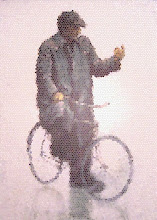

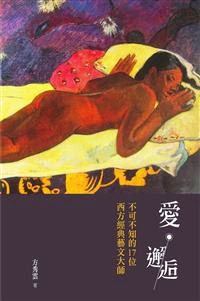
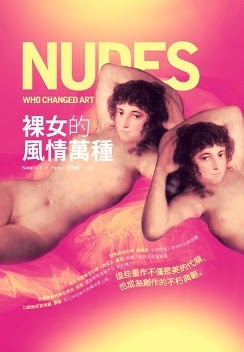
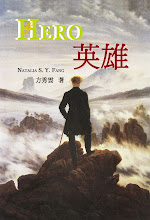

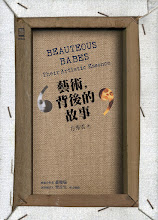
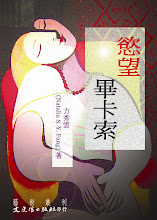
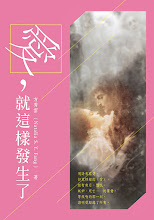
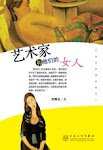
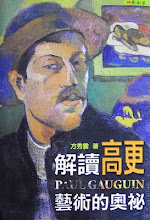
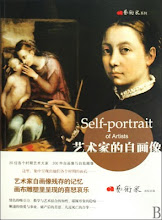
.jpg)
.jpg)
.jpg)
.jpg)
.jpg)